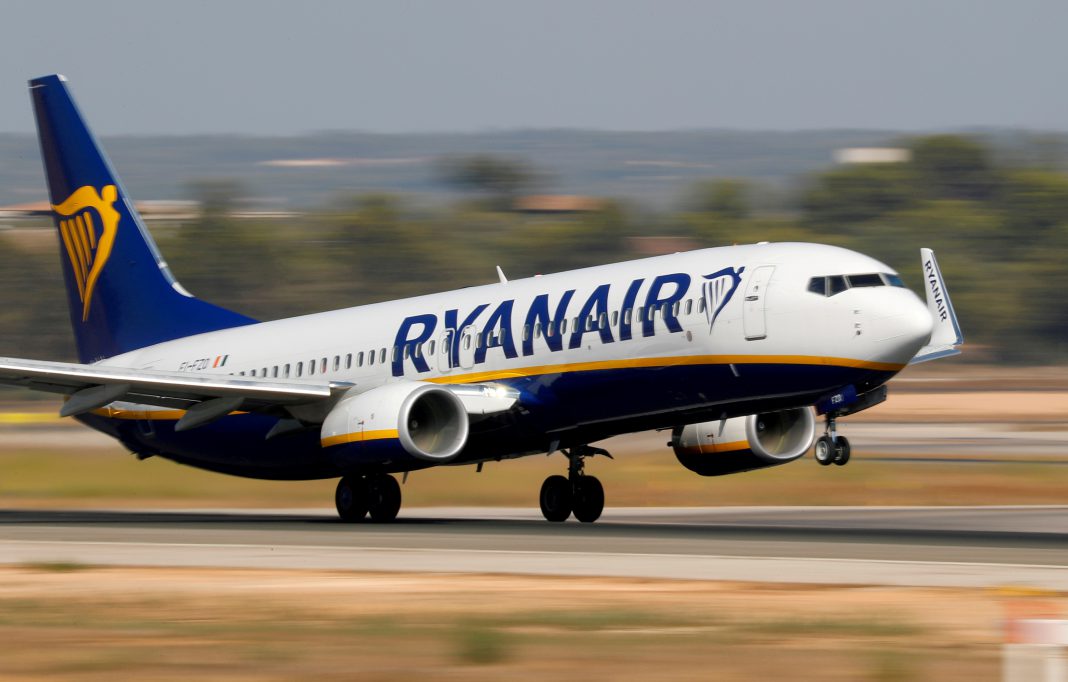Ryanair is looking forward to a potentially better fiscal 2022 than it previously hoped after a dramatic step up in European travel during the latter half of the summer.
From June through August, the number of passengers on Ryanair flights more than doubled to 11.1 million per month from 5.3 million, owing to successful Covid-19 vaccination campaigns across Europe and the implementation of the EU’s digital health certificate on July 1, Group CEO Michael O’Leary said during a September-quarter results presentation.
“That demand strength continues for peak travel periods this winter, including Christmas and the New Year, as well as school winter breaks and Easter next year,” he added.
That strength gives Ryanair confidence that it will exceed its 90-100 million passenger forecast for the fiscal year that ends in March, said O’Leary. However, the discounter expects of an annual loss of €100-200 million ($116-232 million) for the period owing to a weak June quarter and continued challenges from rising fuel costs, weak demand outside of peak travel periods, and a still close-in booking curve.
But Ryanair’s outlook affirms the narrative the industry has heard time and time again in the Covid-19 recovery: Leisure travel, and leisure-travel oriented airlines, are leading. That was true in the U.S. where airlines that rely the most on holidaygoers saw the biggest returns over the summer, even as they struggled with operational and staffing issues. And in Europe, one of the continent’s largest legacy airline group’s Air France-KLM saw its budget subsidiary Transavia far-and-away lead in the third quarter with operating margins approaching 2019 levels.
“More leisure oriented low-cost carriers have been able to capitalize on the pent-up demand over the summer months, making the ramp up easier,” said Jonathan Sullivan, a managing director in Accenture’s travel vertical, on Ryanair’s results.
And Ryanair is definitely ramping up. The airline has unveiled 14 new bases in 2021, including one at Stockholm Arlanda and three in Italy — Turin, Venice Marco Polo, and Venice Treviso — with plans for more. This growth is supported by what it expects will be a fleet of 65 Boeing 737-8200s by the start of the Summer 2022 schedule; Ryanair had 19 Maxes in its fleet at the end of September.
“We expect to be leading what will be a very strong recovery in short-haul intra-European air travel into the summer of 2022,” said O’Leary. He did not provide a passenger forecast for the period, though. If demand continues to improve on the same trajectory it has been, it is easy to see passenger numbers recovering to the roughly 15 million a month that Ryanair carried during Summer 2019. Numbers were down just 18 percent year-over-two-years to 11.3 million in October.
O’Leary also repeated his view that there are more growth opportunities for Ryanair today than he has ever seen. Alitalia’s closure and replacement with half-its-size ITA Airways in Italy, Norwegian Air’s retrenchment in Scandinavia, and TAP Air Portugal’s struggles were among those he cited for the airline.
“We see huge growth opportunities, not just in new bases, but also … to replace the capacity that’s been lost by their incumbent airlines,” said O’Leary in a direct nod at EasyJet. In September, the UK-based carrier raised £1.2 billion ($1.6 billion) from a rights issue to bolster its balance sheet and fund expansion, particularly at popular slot-controlled airports where legacy competitors are retrenching.
Ryanair also plans to expand its group fleet, to roughly 600 aircraft, and carry 225 million passengers by its 2025 fiscal year. The airline carrier 149 million passengers on 440 aircraft during the fiscal year ending March 2020.
One topic O’Leary did not hold back on the end of talks with Boeing over a potential Max 10 order, calling the planemaker’s pricing for the jet “deluded.” He cited the pivot by Jet2 to Airbus jets and IAG’s lack of action on firming its letter of intent for up to 200 Maxes as examples of Boeing misses on pricing.
During the six months ending in September, Ryanair lost €47.6 million — an almost 90 percent improvement over the same period in 2020. Revenues increased 83 percent year-over-year to €2.2 billion and expenses 57 percent to €2.2 billion as well; compared with 2019 revenues that were down 54 percent and expenses 35 percent.
In addition, the carrier said it is considering delisting from the London Stock Exchange following a drop in trading after Brexit. Ryanair remain listed on the Euronext Dublin exchange.
Ryanair did not provide guidance for the December quarter or the second half of its fiscal year, citing the pandemic. Its full year passenger number and loss forecast is dependent on the trajectory of Covid-19 infections this winter.


